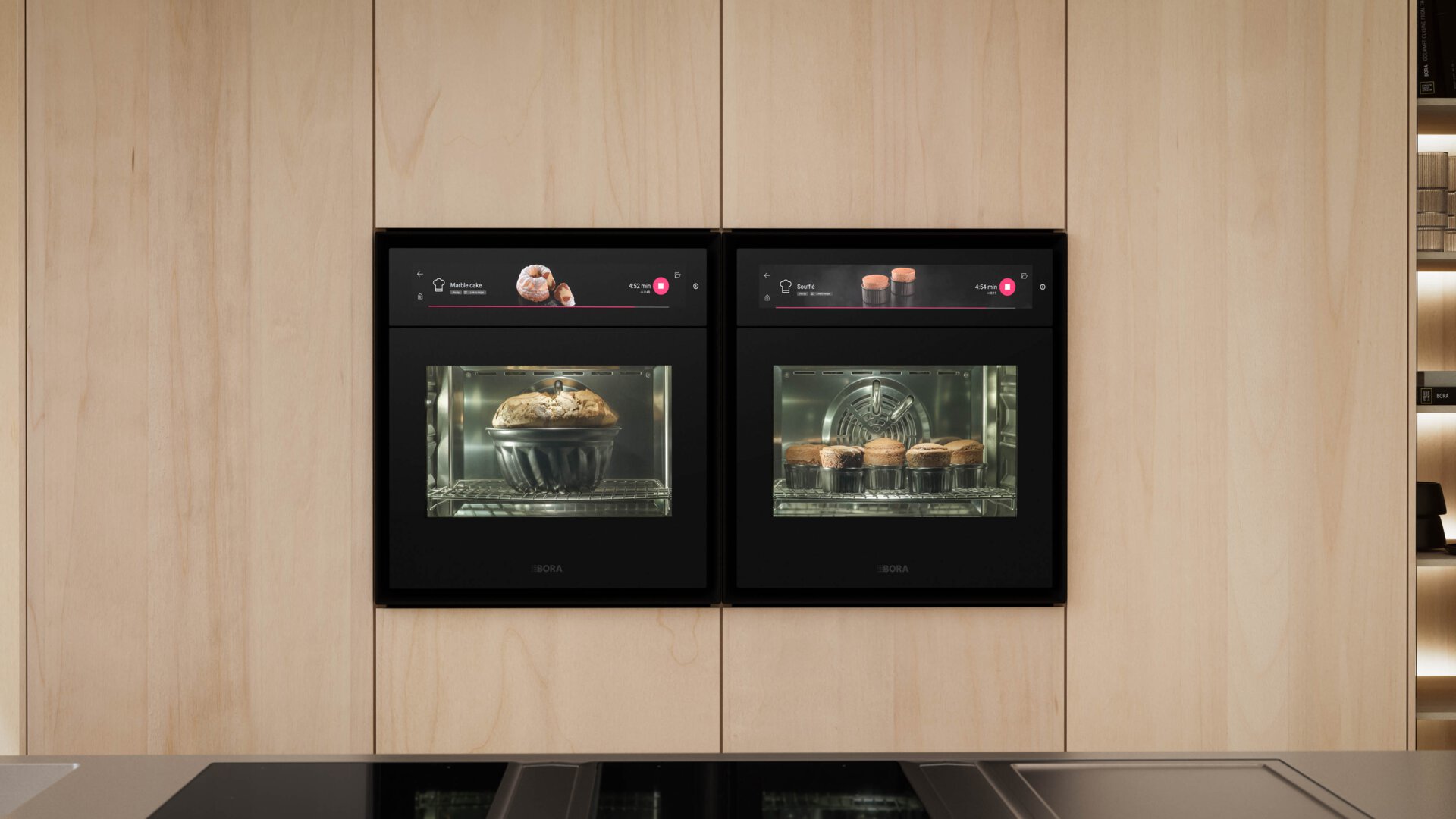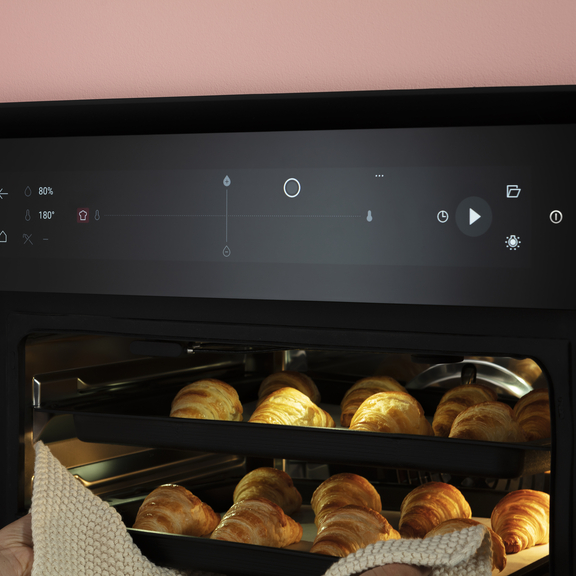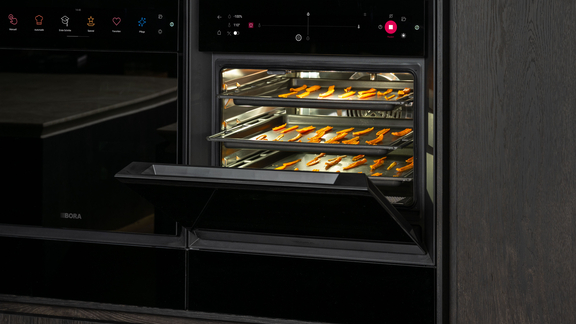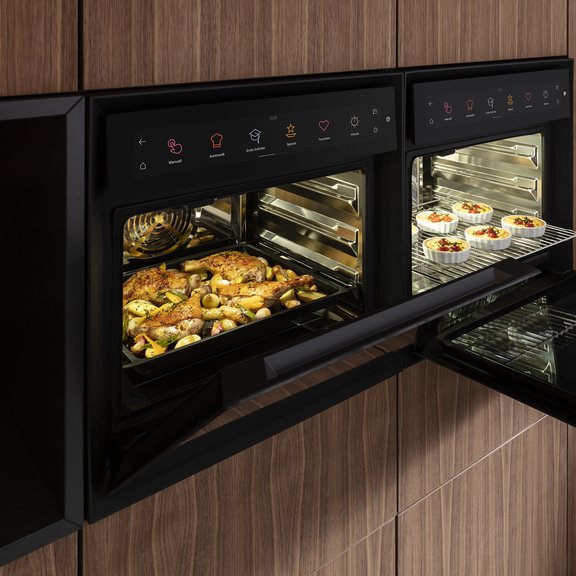

Steam cooking is a gentle and healthy way to prepare food. There are numerous combination appliances on the market with this function, some of which replace conventional microwaves or even ovens. But how does steam cooking work and what are the advantages? We’ll provide you with some interesting facts about this cooking method.

Steam isn’t just something that escapes when you heat up food; it can also be using for cooking. Technically, anything you can boil in a pan can also be steamed. This includes vegetables from asparagus to spinach, sides like rice and potatoes, desserts like yeast dumplings, and many types of meat and fish.
When steaming food, it is placed on a perforated stainless steel tray and surrounded by hot steam. This evenly cooks food at up to 100 °C. When steam cooking, the temperature can be adjusted according to the product.
A simpler way of steaming is with a steamer basket for pans which you place over the simmering water. In this case, you can get different metal ones, but you can also steam food in a bamboo steamer. You can achieve better results with a specially designed steamer. This provides several tiers for cooking and looks a bit like an oven.
There is a whole host of advantages to steam cooking food rather boiling it in water the classic way:
The food does not sit in the water, meaning that flavours, vitamins and minerals are optimally preserved, as are colours, shapes and consistencies. After cooking, green broccoli remains just as bright as orange carrots. The food retains its natural flavour, which you can enhance with a light seasoning.
When steam cooking, nothing burns or boils over. You can relax as you prepare the rest of the meal or turn your attention to your guests.
Contrary to cooking in a frying pan or oven, you do not need to add any fat. This is not only great for a healthy, conscientious diet, but it also reduces the formation of odours.
In a steamer, you can cook different foods at the same time on all the levels as flavours are barely transferred.
When steam cooking, it is possible to take out or add ingredients or dishes. This means that everything is cooked to perfection.
One drawback of simple steamers: they can only handle this one cooking method. In this regard, appliances like steam ovens are second to none for steam cooking. They combine the functions of a steamer with those of an oven.
With the BORA X BO, your dishes turn out perfectly succulent, tender or crispy when steam cooked in the oven. To make it easier to use, the automatic programmes are provided with important presets for temperature and humidity. When steam cooking, beginners can follow the instructions. Experienced chefs can select the settings manually. The optional BORA multi-drawer is the perfect addition for even greater convenience.

Innovative steam and hot air technology and cooking on three levels combine with simple operation via touch display for perfect results.
Steam cooking is generally uncomplicated, but does have a few quirks. The following tips will help you to achieve perfect results.

The cooking time can be influenced by the size of the individual ingredients when chopped. If you cut food up small, you will save energy.
When steaming food, you don’t need to add as much salt or other seasoning as usual as the food’s own flavours are more pronounced. It is best to add herbs and spices or butter after cooking and to taste the food before seasoning.
What’s more, you can place vegetables or herbs in a perforated tray above the food. The flavours released in the steam will drip down onto the food.
Another option is to add herbs or wine to the simmering water under the food. The circulating steam will distribute the flavour.
You can also steam pasta: simply put it in the steamer in an unperforated container with some water and salt.
For most appliances, you can get special rice bowls or unperforated containers suitable for cooking rice. The rule of thumb for the amount of water: calculate about one and a half parts of water to one part rice, that is, 1.5 cups of water to one cup of rice.
So, not only vegetables, meat and fish can be steamed, but rice and pasta too.
Conventional boiling in water washes a relatively large amount of nutrients out of the food. Steam cooking significantly reduces this problem. Most of the food’s natural flavours and vitamins and minerals are preserved.
When steam cooking, the cooking time is a bit longer than when boiling. What’s more, food isn’t browned as it is when roasting or baking. However, this can usually be resolved by adding a step. It can done particularly easily with a steam oven like the BORA X BO.
Salt can be added sparingly to food before steaming. This sometimes helps the cooking process, as is the case of rice or pasta. In the case of other spices, we recommend adding them afterwards.
In general, you need less seasoning as the food’s natural flavours are more intense thanks to this gentle cooking method. To avoid accidentally over-seasoning, it is advisable to taste the food before seasoning it.
This cooking method is suitable for a wide range of foods. For instance, you can steam vegetables, as well as meat, fish, fruit, rice, pasta, potatoes and desserts like yeast dumplings.
‘Cooking’ is a generic term for the preparation of food by heating it, for instance, by boiling it in water or frying it in a pan. ‘Steaming’ refers to cooking with hot steam, also known as steam cooking.
The food is surrounded by hot steam at a maximum temperature of 100 °C and thus heated. To cook with steam, inserts for ordinary cooking pots, special steamers and steam ovens can be used.